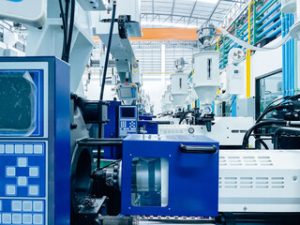American Plastic Molds are a fundamental part of the manufacturing process. While there are many different kinds of molds, they all share the same basic principles.

The first thing to consider is the mold design. This is typically done as a CAD file and must follow the appropriate guidelines for the injection molding process.
Injection molding is a highly effective plastic processing method that can be used to make many different types of products. However, it requires careful consideration of many variables in order to produce high-quality, accurate results. Temperature control and distribution is one of the most important aspects of injection molding. Injection molds must be heated to the right temperature to ensure that the polymer melts properly, while also allowing it to cool sufficiently for proper curing.
The ideal injection molding process will maximize output while minimizing cost and defects. This can be achieved by fine-tuning the injection molding parameters and using advanced monitoring and control systems. This can help to improve product quality and efficiency, while also reducing cycle times and energy consumption.
One of the most common injection molding processes is a multicomponent injection molding (MCIM) that allows for the production of details with a hard matrix of thermoplastics such as PP or PA and additional elastomers, such as rubber or foam, to be obtained during the same production cycle. This process is particularly interesting in the manufacture of protection elements for cars and sports equipment, where a hard shell can be combined with an elastic core.
Another popular plastic injection molding technique is blow molding, which produces hollow plastic products by inflating a heated tube with a hot air or gas. This is most often used for products like bottles and containers. Other methods of plastic injection molding include extrusion, which forces the melted plastic through a die to create a continuous shape. This is best for products like pipes and tubing.
Injection molding is an expensive and time-consuming process, and it’s important to consider all of your options when choosing the right manufacturing method for your project. The right choice will significantly impact the success and profitability of your company. Contact Sound View Plastics for expert guidance and high-quality plastic injection molding services. We will work closely with you to achieve your objectives and ensure that your products meet the highest quality standards. Our experienced team of engineers and technicians will use cutting-edge technology to deliver the best possible results.
Low Speed Injection Moulding (LSIM)
A major trend in injection molding is the digitalization of processes using simulation software. This makes it possible to substitute experiments, which are usually associated with high costs, with a virtual representation of the process. However, it remains unclear to what extent this is feasible and how well a digital simulation corresponds with the in-process results. In order to determine the accuracy of a digital simulation, it is important to consider the specific production scenario.
In injection molding, the raw material is supplied in powder or pellet form and subjected to high temperatures so that it melts and plasticizes. It is then injected into the mold cavity by an injection system to give it its desired shape. The material must have sufficient ductility and fluidity to flow into the mold cavities, particularly around inserts or components, while also being resistant to thermal expansion. For example, polyamides and polyolefins are popular due to their high ductility, thermal stability (180-240degC range), and adhesion properties.
Another common type of material for injection molding is polystyrene (PS). PS is an inexpensive, lightweight material that has good electrical and dielectric properties. It is also resistant to moisture, some salts and acids, and abrasion. It is very easy to process by injection molding and can be molded into complex shapes and sizes.
The LSIM process is a highly automated, computer-controlled injection molding technique that enables the production of large parts in short cycle times. The process offers a number of advantages over traditional injection molding, including increased productivity, lower energy consumption, and the ability to produce multiple products in one shot. The LSIM process can be customized to the needs of each customer by changing parameters such as injection pressure, nozzle sequence, and cooling channels.
LSIM is used to improve the quality of injection-molded products by reducing defects such as flash, sink marks, and surface irregularities. In addition, it can also reduce cycle times by optimizing the number of gates and injection locations and increasing melt and injection pressure. Lastly, it can also help to ensure that the product is structurally sound by increasing venting channels and locations in the mold.
Cold Injection Moulding (CIM)
Injection molding is one of the most popular methods for producing plastic components. It is widely used for low-volume production, pilot-runs and prototyping of designs. This process uses high-pressure injection to form the plastic into a desired shape. There are two main types of injection molds: hot runner and cold runner. A hot runner system has a heated runner channel that transfers the molten thermoplastic from the injection machine nozzle to the mold cavity. A cold runner system has an unheated runner channel and doesn’t transfer the melted plastic to the mold cavity.
The type of injection mold you choose depends on the number of parts you need to produce. Single-cavity injection molds produce one plastic part per injection cycle, making them ideal for small production runs. Multi-cavity injection molds can produce several copies of a product in the same cycle, making them suitable for high-volume production. They are more complex and expensive to design and produce, but they can offer a lower price-per-part at higher production volumes.
Once the injection process is complete, the molded component must be ejected from the mold. This can be difficult, especially if the part has small features that stick to the inside of the mold. To avoid this, the injection mold is fitted with ejector pins that can automatically provide a force to eject the finished product from the mold.
Injection molds can be made of a variety of materials, including steels and aluminiums. The choice of material depends on the required strength and function, as well as environmental factors. Injection molds are also designed to withstand the high injection pressures involved in the manufacturing process, which can be up to 750 bar. This can be a challenge for smaller manufacturers who may not have the resources to invest in high-quality injection molds, or to maintain and service them properly. However, there are a range of alternatives to injection moulding that can be used to produce plastic components, including blow moulding and compression moulding. These processes can offer shorter production times and lower prices than injection molding, but they do have their own set of limitations.
Hot Injection Moulding (HIM)
The plastic injection molding process is a widely used manufacturing technique that uses high-pressure injection of melted polymer into a mould. The process can produce products with complex shapes and features in a very short period of time. It is a cost-effective and reliable method for producing parts and components in the automotive, aerospace, electronics, construction and food industries. It also allows the use of many different types of polymers. These can be as hard as steel or as soft and flexible as rubber, depending on the needs of the final product and the intended market.
The injection moulding process is very energy intensive, requiring the use of a high-temperature melt chamber and the application of significant pressure. It is therefore important to ensure the correct operation of the machine and a good understanding of its limitations. The use of an automated system for monitoring and controlling the operation of the injection moulding machine reduces waste and can help to improve quality by reducing variations in the finished products.
Another important factor in injection moulding is the design of the mold, or die. It is essential that all the features of the die are designed to fit the molded part, and that there are no gaps between them. This is important to avoid leakage and improve the finish of the molded part. The mould can be built through standard machining or through CNC machining. The method chosen will affect the initial costs of building the mould. A large number of cavities, or cores, will require more tooling work and increase the initial manufacturing costs. Also, any features that are likely to be exposed to shear stress during the injection and cooling process need to be designed carefully.
The polyolefin group of plastics are a common choice for injection moulding. These plastics are highly versatile and offer a range of properties that make them suitable for many applications, including being highly resistant to erosion and chemical spills. However, the injection moulding process has its challenges, such as thermal expansion of the mould components, which can cause distortion in the molded part.

